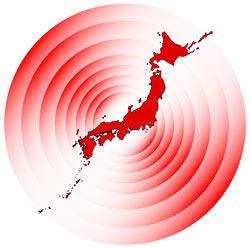The Magnitude of the Japan Earthquake on Global Food and Agriculture
 A special report issued by the Rabobank Food & Agribusiness Research and Advisory (FAR) group indicates the consequences of the earthquake and tsunami to Japan's agricultural and food industry could be dire. While the full impact of the earthquake and radiation are not yet understood, the report — which estimates the potential impact on six major sectors of Japan's agricultural industry — projects that food safety concerns and supply shortages will limit exports and cause imports to rise.
A special report issued by the Rabobank Food & Agribusiness Research and Advisory (FAR) group indicates the consequences of the earthquake and tsunami to Japan's agricultural and food industry could be dire. While the full impact of the earthquake and radiation are not yet understood, the report — which estimates the potential impact on six major sectors of Japan's agricultural industry — projects that food safety concerns and supply shortages will limit exports and cause imports to rise.
The findings are based on the Rabobank FAR report entitled “Japan Earthquake: Magnitude of Impact on Food and Agriculture.” Rabobank created and maintains the FAR unit to conduct ongoing research and analysis on issues of importance to agriculture around the world.
“While the situation is still evolving, the domino effect of the disaster will likely result in more imports from trade partners, such as the U.S., Australia and China,” notes Jean-Yves Chow, Rabobank senior industry analyst for North East Asia and lead author of the report. “The radiation issues at the Fukushima plant have heightened food safety concerns at a time when Japanese food self-sufficiency is already low. Japan may need to revise its food security strategy to manage the country's risk.”
The report notes more than a quarter of Japan's domestic pork production, 18% of its beef production and 22% of its poultry production comes from areas impacted by the earthquake, tsunami or radiation from the Fukushima nuclear plant. In addition, cold storage has been compromised by electricity loss, which could lead to the need for additional imports.
“Based on the current weakness of the U.S. dollar compared with the Australian dollar, the U.S. would be a competitive source for additional beef exports,” says Sterling Liddell, vice president, FAR. Liddell continues to note that the milk production season in Australia and New Zealand is winding down, making the U.S. along with other parts of the Northern Hemisphere a possible source for additional dairy imports.
The full report, which is available upon request, provides an overview analysis of each food sector. Highlights follow:
- Meat. A significant portion of Japan's pork, poultry and beef industries are located in the impacted region. Primary production damage could translate into a loss of total meat output of between 70,000 tons and 350,000 tons in the worst-case scenario. Power shortages following the earthquake have damaged large volumes of meat in cold storage. Increased reliance on imports may trigger safeguard tariff increases for beef or pork. Poultry production was already affected due to the recent bird flu outbreak.
- Dairy. The damaged area accounts for 15% of Japan's dairy production, but the largest dairy-producing region in Hokkaido has not reported any food-safety issues. Since Japan is one of the world's largest cheese importers, attention will be focused mainly on trade flows for this product.
- Seafood. The seafood production industry in Japan is reported to be experiencing widespread damage. The earthquake and tsunami destroyed many fishing ports and vessels, and washed away both aquaculture and wild seedbeds for key products such as scallops and oysters. Contamination of seawater is causing consumers to shift away from fresh, local seafood to canned or imported products. Import bans in other countries are impacting not only Japan's exports, but are forcing Japanese seafood restaurants around the world to source product elsewhere.
- Vegetables and fruit. Reports indicate the earthquake and the tsunami destroyed vegetable farms and orchards in the northeastern part of Japan. Excessive radioactive matter found in locally produced vegetables and fruits could harm local consumer confidence. As a result, vegetable and fruit imports are expected to increase in the coming months.
- Grains. Japan is heavily dependent on imported wheat. Most processing mills are outside the damage zone, but power shortages are temporarily impacting processing production. Japan estimates 15% of its compound feed industry capacity was damaged.
- Rice. The earthquake had no immediate impact on rice production, but concerns about soil contamination will affect the next planting in April and May. Due to high year-end stock, the availability of rice is not immediately threatened. There is no immediate need for imports in response to the natural disaster.













